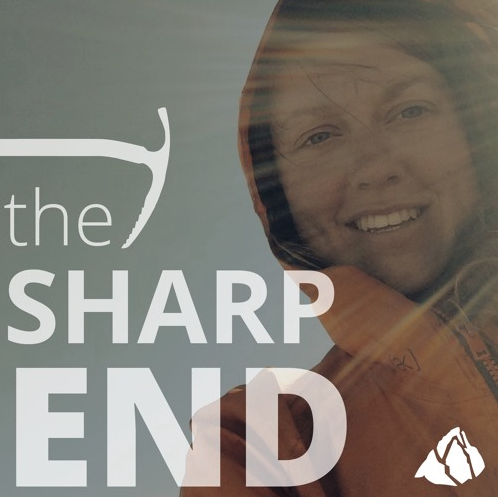Crevasse Fall and 15-Hour Rescue – Climbing Unroped
Alaska, Denali, West Buttress
AT APPROXIMATELY 11:30 p.m. on June 4, an unroped climber fell into a crevasse just below the 7,800-foot camp on the West Buttress Route. The climber fell approximately 60 feet before coming to rest where the crevasse narrowed to about 12 inches in width. Numerous rangers, guides, and other climbers worked for roughly 15 hours to extricate the climber from the crevasse. He was severely hypothermic and sustained a brachial plexus nerve injury in one arm. He was flown by park helicopter directly to Fairbanks Memorial Hospital soon after extrication.
This 38-year-old climber was on a private climbing expedition with six other teammates who flew onto the Kahiltna Glacier on May 21 and summited via the West Buttress Route on June 3. During their descent to base camp, the team divided into two groups, with five climbers on skis and two on snowshoes. Prior to his crevasse fall, the patient was traveling on snowshoes with one other teammate—the two were not roped together.
Shortly after passing through 7,800-foot camp, the two climbers encountered a four-foot-wide crevasse. As the first climber began to cross the snow bridge covering this crevasse, the bridge collapsed and caused the climber to fall roughly 60 feet, only stopping when he became wedged in the narrowing fissure. His partner could not see him and returned to the 7,800-foot camp to get help.
Multiple guides (Bill Allen, Kristie Kayl, Erin Laine, and Karl Welter) responded to the calls for help and notified mountaineering ranger Joe Reichert of the situation. The guides arrived on scene shortly after midnight and were able to communicate with the patient. These guides took turns descending into the crevasse multiple times to attempt extrication. The patient was wedged in such a way that simply hauling on his climbing harness would have resulted in further injury. The guides were able to clip into the patient’s harness (in hopes of keeping him in place) and remove items from his backpack to allow additional room for him to breathe.
When the weather cleared at 3:55 a.m., the NPS helicopter was able to bring mountaineering rangers Dan Corn, Chris Erickson, Frank Preston, and two NPS volunteers to the accident scene to relieve the guides, who had been working continuously for almost four hours. The rescuers found the working conditions inside the crevasse to be extremely challenging. After lowering to the scene, each rescuer chipped away at the ice with an ice axe to create more room to extricate the patient. This process began about eight feet above the climber, where the crevasse first narrowed to about a foot in width. At 4:45 a.m., Erickson was able to free the patient from his backpack and alleviate continued breathing issues.
More guides, mountaineering ranger Mik Shain, and NPS volunteers Jake Beren and Steve Gately arrived throughout the morning hours to assist in the rescue. A helicopter carrying rescuers from Talkeetna also brought tools requested from the Talkeetna Fire Department (chainsaw, pneumatic chisel, blowtorch) when it was realized that traditional mountaineering tools were not sufficient. The chainsaw was most useful at the crevasse lip, helping to open up the entry, and the pneumatic chisel was most effective at opening up the area above and surrounding the patient. The patient’s snowshoes had become wedged and required the most effort to extract from the ice.
The patient was finally freed at 3:20 p.m. During the rescue, his mental status had steadily declined, to the point where he was responsive only to pain stimuli.
Once freed, the patient was raised from the crevasse with a mechanical advantage system and arrived on the glacier surface at 3:35 p.m., about 16 hours after he had fallen. The patient was transferred to a vacuum mattress for spinal-injury precautions and then flown in the NPS helicopter to Fairbanks Memorial Hospital. (The decision to fly north toward Fairbanks was dictated by inclement weather to the south of the mountain range.) The patient was treated in the ICU for several days, primarily for severe hypothermia, before being discharged to return home.
ANALYSIS
Traveling in glaciated terrain without a rope is never without risk. The snow bridges that cover crevasses degrade over time and can fail suddenly, as in this instance. Moreover, there is a heuristic trap that occurs when numerous people cross a bridge successfully, leading subsequent climbers to believe it is solid and safe. Being roped to teammates that can arrest an unexpected fall is the only way to prevent accidents like this from occurring. It’s like a form of insurance where the cost is minimal and the benefits can be great.
The other factor highlighted by this accident was the wedging of the patient at the bottom of the crevasse as it narrowed. It is very unlikely that traditional companion-rescue techniques and tools would have extricated this climber before he succumbed to hypothermia. A similar incident occurred in the Alaska Range in the early 1980s, involving a climbing party of two, and the patient perished at the bottom of a crevasse when the partner was unable to free his partner. (Source: Denali Mountaineering Rangers.)
CREVASSE FALL AND SHOULDER DISLOCATION: At approximately 5 a.m. on July 14, a guide called the NPS office in Talkeetna to report that a 33-year-old male climber had fallen eight to ten meters into a crevasse at 7,800 feet on the Kahiltna Glacier. The climber’s rope team was able to arrest the fall, but he had dislocated his left shoulder. The patient was extricated to the surface after 20 to 30 minutes in the crevasse and flown to Talkeetna. (Source: Denali Mountaineering Rangers.)





